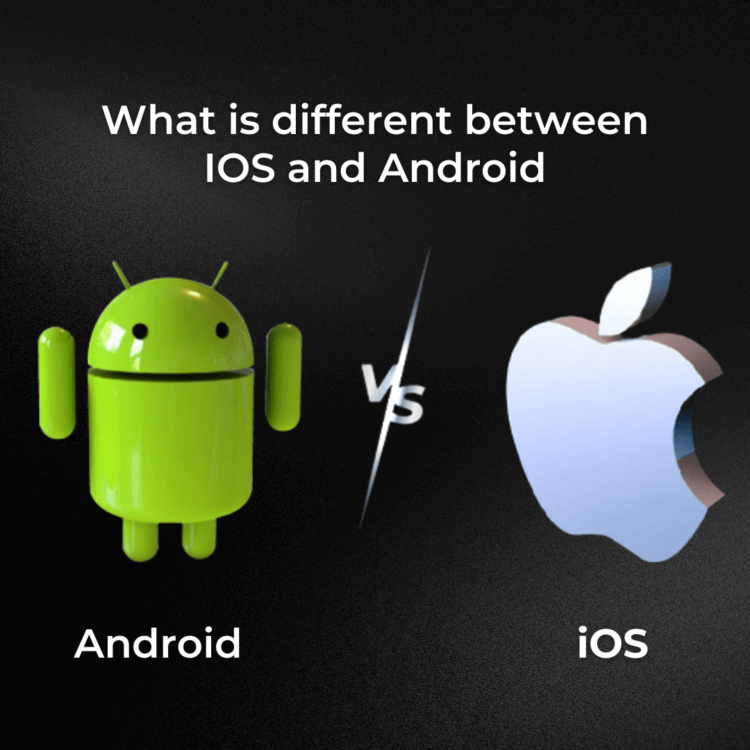1. Developers and App Stores:
iOS: Developed by Apple, iOS has a strict app review process, which aims to ensure quality and security. The App Store is the sole distribution platform for iOS apps.
Android: Developed by Google, Android has a more open app distribution system. Apps can be downloaded from the Google Play Store, but users can also install apps from third-party sources.
2. Customization and Flexibility:
iOS: iOS offers a more consistent user experience across devices due to Apple’s control over hardware and software. However, customization options are more limited compared to Android.
Android: Android provides a higher level of customization and flexibility, allowing users to personalize their devices through widgets, launchers, and system tweaks.
3. Hardware and Device Variety:
iOS: Apple produces a limited range of devices, such as iPhones and iPads, resulting in a more controlled hardware environment that optimizes for specific hardware-software integration.
Android: Android runs on a wide variety of devices from different manufacturers, leading to diverse hardware specifications, features, and price points.
4. User Interface Design:
iOS: iOS features a sleek, consistent design with a focus on simplicity and minimalism. The interface tends to be more uniform across apps.
Android: Android’s design philosophy can vary more between devices and manufacturers, giving developers more freedom in designing user interfaces.
5. Integration with Ecosystem:
iOS: Offers tight integration with other Apple devices and services like iCloud, iMessage, FaceTime, AirDrop, and Continuity.
Android: While Google’s ecosystem integrates well with Android, it may not be as tightly integrated as Apple’s ecosystem.
6. Updates and Fragmentation:
iOS: Apple controls both hardware and software, which often results in quicker and more uniform updates across devices.
Android: Due to the wide variety of manufacturers and devices, Android updates can be slower to roll out and are often fragmented across different versions.
7. Privacy and Security:
iOS: Apple emphasizes user privacy and security, offering features like App Tracking Transparency and strong encryption. App permissions are more strictly controlled.
Android: Google has also improved its privacy and security features, but the open nature of the platform can make it more susceptible to malware and data breaches.
8. Development Environment:
iOS: Developers primarily use Xcode and the Swift programming language to create iOS apps.
Android: Developers use Android Studio and can choose between Java or Kotlin as programming languages for Android app development.
9. User Interface and Customization:
iOS: Offers a consistent and intuitive interface with limited customization options. Users can organize apps into folders and arrange them on the home screens.
Android: Provides a higher level of customization, including the ability to change home screen layouts, use widgets, and install third-party launchers to alter the overall look and feel.
10. App Ecosystem:
iOS: Limited to Apple devices like iPhones and iPads, resulting in a controlled hardware-software integration for optimized performance.
Android: Available on a wide range of devices from various manufacturers, offering diverse features, sizes, and price points.
11. Updates and Fragmentation:
iOS: Apple controls both hardware and software, leading to quicker and more uniform updates across devices. Older devices are often supported for longer.
Android: Updates are affected by manufacturers and carriers, causing fragmentation where devices can run different Android versions. Some devices might not receive updates for an extended period.
12. Development Environment:
iOS: Developers use Xcode and Swift or Objective-C programming languages to create iOS apps.
Android: Developers use Android Studio and can choose between Java or Kotlin programming languages for Android app development.
13. Multitasking and Productivity:
iOS: Provides a straightforward multitasking experience, with split-screen mode available on iPads. Widgets are available in the Today View.
Android: Offers more advanced multitasking features, including split-screen and picture-in-picture mode on compatible devices. Widgets can be placed on the home screen.
14. Assistant and Voice Control:
iOS: Features Siri, Apple’s voice-controlled assistant, which integrates with various apps and services.
Android: Includes Google Assistant, which deeply integrates with Google’s services and offers contextual assistance.










No Comments
Leave Comment